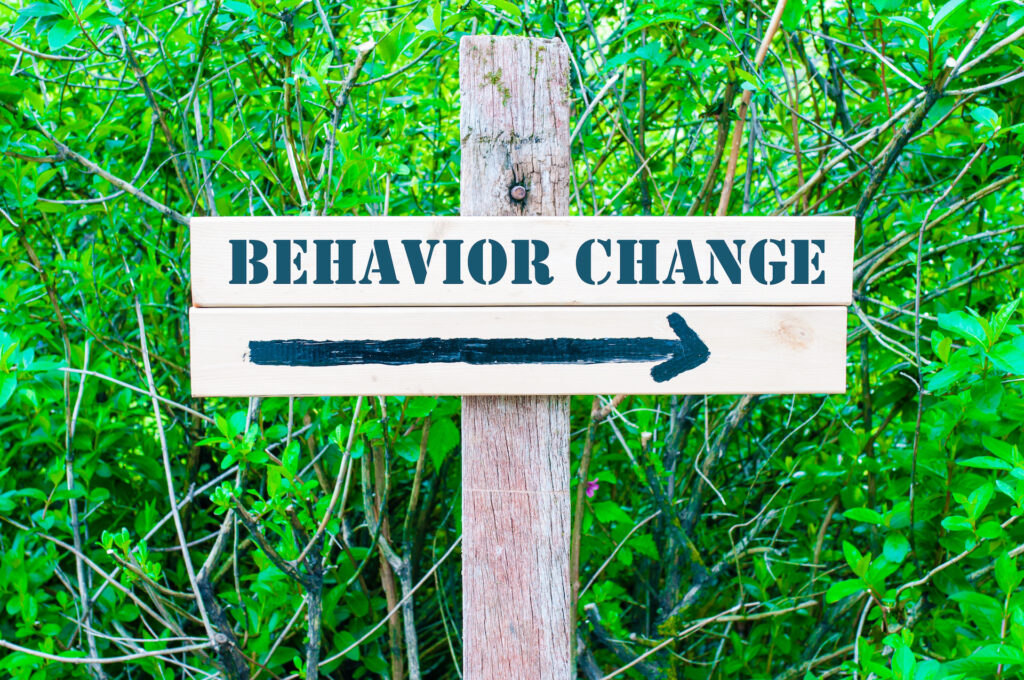
Everyone can lose weight, but unfortunately not everyone can maintain it. So, I’m here to share the most important behavioral strategies for weight loss.
If you’re getting serious about weight loss as a long-term goal, it ALL starts with behavior change. I’ve had clients come to me and say that they were able to lose weight in the past, but over time, the weight came back, and they didn’t know what to do next. When I was able to work with them on their behaviors, it changed everything. That’s why it’s so important to talk about behavioral strategies for weight loss.
My weight loss program was evaluated at UC Berkeley and San Francisco State University, and the results showed that 84% of clients maintained their weight loss after 2 years. If you’ve tried to lose weight before, you know that the maintenance is often one of the hardest parts. So, let’s take a look at how behaviors bring the most success, and which ones to focus on.
Diet Mentality vs. Behavior Change
If you look at popular diets like Whole 30, Paleo, Keto, and others, none of these account for your individual lifestyle. Where you live, where you shop, what foods you like, your health conditions – they all have an impact. And if you’re trying to lose the weight for good, why wouldn’t you address these factors first? After all, they are the constants in your life! So, by creating an eating pattern around your lifestyle, and addressing the behaviors that are involved with those choices, you’re taking the first step towards success.
Make the lifestyle work for you, don’t work for the lifestyle of a diet you don’t enjoy.
Common Barriers for Weight Loss Success
Weight loss success really isn’t about cutting bread or chocolate out of your diet. It is about your behaviors and your ability to plan. Common reasons people don’t see the scale moving in the direction towards weight loss include:
- Not planning ahead
- Not having healthy foods in the kitchen
- Only having a few healthy recipes and getting sick of them after a while
- Not accounting for preferred flavors and cuisines, and instead trying to adapt to a flavorless and boring eating pattern
- Not holding themselves accountable with a food record or a way to track behaviors
- Not getting enough sleep
Example: You don’t go to the grocery store frequently enough, so you don’t have healthy options at home. Because of this, you end up grabbing low-quality meals at work or ordering food that is different than what you know would be best for your goals.
To solve this, schedule an appointment with the supermarket when you know you can make it. This way, it’s in your calendar as a non-negotiable. Make a food list before you go with items you know you’ll need for specific meals that week.
Positive Behavioral Strategies for Weight Loss
Behaviors reported by former participants of my program who have successfully maintained their reduction in weight had 7 common behaviors for success:
- Most eat breakfast
- Most do not skip meals
- Most continue to combine food groups when eating
- Most continue to eat low-fat food choices most of the days of the week
- 60% still keep a food record
- Most get a good night’s sleep most days of the week
- Most dine out less than 5 meals per week
The Other Key Weight Loss Tool
Another common situation I see with clients is that they haven’t truly started to engage with their kitchen, supermarket, or the food they’re eating. You know which foods you enjoy, so take that and make it an enjoyable part of your day! Explore with new flavors, find a new grocery store to see if you can find new products, and keep your recipe list fresh! Until you put the proper effort into creating the food and having fun with it, you won’t find the success you’re looking for.
Client Success Story
A dear client of mine, a 68-year-old woman, was having trouble losing weight. She knew what she needed to eat but wasn’t taking the proper action. When we met, our conversation led to the discovery that she was hitting a roadblock by not having healthy food at home. The moment she realized this and started to plan her meals, she lost 40 pounds. It was a simple change, but one that was hidden in the comfort of her normal routine.
First Steps to Take for Positive Behavior Change
Here are three steps to keep in mind when focusing on behavioral strategies for weight loss.
- Write down your typical day – what time do you wake up, what time are your meals, what do your meals consist of? Is there something in this pattern that blocks you from eating the foods you know you should be eating for successful weight loss?
- Identify the roadblock and make a plan of action to overcome the hurdle.
- Find your groove and make a template for success for the week. At the end of each week or month, reevaluate if there are other behavior barriers that took you off track from your goals, and make a plan to address them.
If you’d like individual guidance, schedule a free 20-minute counseling session today!






